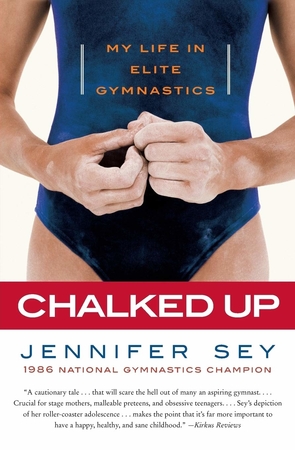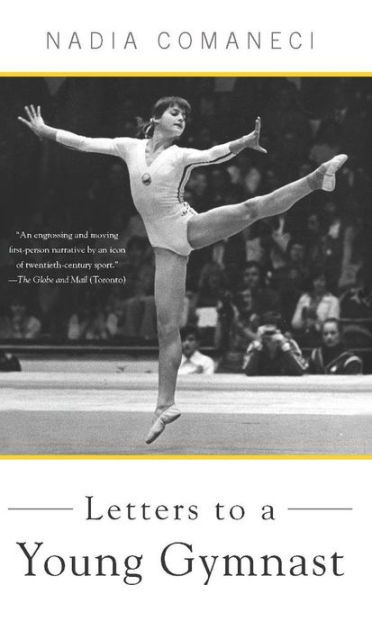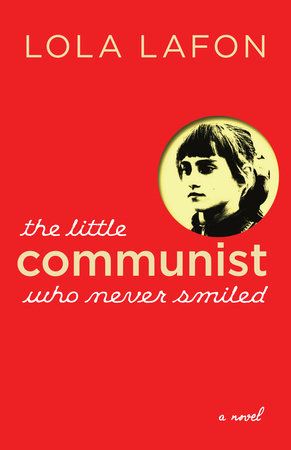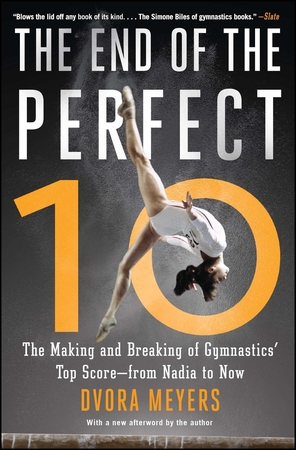With the cancellation of the Summer Olympics this year and a pandemic continuing to rage on, most of us are stuck at home watching grainy YouTube videos of old gymnastics competitions—or “Athlete A,” the new Netflix documentary on female gymnasts.
“Athlete A” highlights the costs of being an Olympic gymnast to the forefront, explicitly addressing the widespread sexual and emotional abuse that runs rampant in the community. Although we see immaculately poised athletes with gleaming smiles on screen, it’s important to remember that these young women grapple with physical danger and intense emotional pressure on a daily basis. Similarly, the books below offer multiple perspectives on gymnastics that extend beyond a 45-second bar routine. They cover a wide range of what it means to be a competitive gymnast, whether through details of minutiae like blistered, chalky hands or a comprehensive documentary of multiple gymnasts’ lives. They provoke the reader to look beyond the oh-so-satisfyingly timed flips, and challenge us to think about the systems of power, inequity, and (often) abuse that govern the world of competitive gymnastics.
So, the next time you find yourself missing the Olympics and perfect gymnastics routines, try reading one of these books. Perhaps we can welcome the 2021 Olympics (pandemic permitting) with a new fuller understanding of the sport, and better recognition of what being a gymnast entails.
You Will Know Me by Megan Abbott
Forget soccer moms; Abbott’s critically-acclaimed novel takes “gymnastics mom” to a whole new level. Centering on a talented gymnast’s mother, You Will Know Me is a thriller examining the psychological toll of competitive gymnastics within the family. Katie and Eric Knox have dedicated all resources possible to support their daughter’s gymnastics career. But when someone in the gymnastics community is suddenly killed, Katie herself is not sure how far she’ll go to make her daughter into a star. Abbott’s unreliable narrator amplifies community hysteria and parental ambition in the gymnastics world.

Chalked Up: Inside Elite Gymnastics‘ Merciless Coaching, Overzealous Parents, Eating Disorders, and Elusive Olympic Dreams by Jennifer Sey
It’s impossible to talk about gymnastics without talking about bodies; female gymnasts are often described as “racing against time” to claim fame, before their bodies give way. Sey, a former U.S. National Champion gymnast, writes in her memoir about constantly trying “to beat the menacing development of my own body… before puberty and curves and weight made it nearly impossible for me to fly through the air.” Chalked Up plunges readers into the mindset of a young female gymnast, and explores the extent to which she tried to control her body into perfection.

Letters to a Young Gymnast by Nadia Comaneci
It is just as impossible to talk of gymnastics without running across the legacy of Nadia Comaneci, the Romanian gymnast that first scored a perfect ten from judges. Framed as a series of letters to an inquisitive younger gymnast, this memoir is a clear-eyed, no-nonsense look at stardom. “Perhaps you expected short and simple answers,” Comaneci writes, “My life, like your own, is much more complex than a simple list of failures and accomplishments, and I will not cheat you of your answers despite some discomfort on my part in the telling.” Comaneci writes frankly about her experiences as a world champion, as well as her motivations for her career decisions.

The Little Communist Who Never Smiled by Lola Lafon, translated from French by Nick Caistor
While Comaneci frames her career in her own words in Letters to a Young Gymnast, Lafon’s novel highlights the political context of Comaneci’s career, exploring the intersections between gymnastics and global power struggles. Comaneci constantly made headlines not only for her perfect routines, but also for her eventual defection from then-Communist Romania. A re-imagining of Nadia Comaneci’s life that blends together historical research and fiction, Lafon shows how the Cold War affected Comaneci’s individual story, making her into a political symbol.

What is a Girl Worth?: My Story of Breaking the Silence and Exposing the Truth about Larry Nassar and USA Gymnastics by Rachael Denhollander
As “Athlete A” shows, Denhollander was the first to speak up against U.S. Gymnastics doctor Larry Nassar’s sexual abuse. This recent memoir by the former gymnast (now attorney) similarly exposes the corruption and power abuse of gymnastics officials. What is a Girl Worth emphasizes that this is not an individual problem of one abuser like Nassar; rather, it is a systematic, national issue of injustice. Denhollander also speaks up against the abuse she faced in her church community, and her memoir intertwines her experiences with religion and forgiveness alongside legal battles.

Little Girls in Pretty Boxes by Joan Ryan
Published in 1995, this non-fiction book shows that the system of gymnastics has been off-kilter for decades. Sportswriter Ryan analyses the abuse of gymnasts and figure skaters, recording a range of issues from eating disorders to psychological abuse; with Little Girls in Pretty Boxes, it’s all too easy to see how the world of gymnastics allows abusers like Larry Nassar to continue working. Ryan’s book also poses a question about the sports industry, one that seems resonant for Americans at large: at what cost must we pursue this idea of “winning”?

The End of the Perfect 10: The Making and Breaking of Gymnastics’ Top Score—from Nadia to Now by Dvora Meyers
Have you also been confused why undeniably stellar gymnasts today—like Simone Biles and Aly Raisman—never get that “perfect” score, ending up with minuscule point deductions? In Meyers’s non-fiction study, she meticulously tracks why the current scoring mechanisms do not allow for numerical perfection. The system of gymnastics scores have changed from a 1.0-10.0 system into a convoluted matrix of scores; since 2004, we are a far cry (or leap) away from the time when Nadia Comaneci scored a perfect 10. A former gymnast herself, sportswriter Meyers draws upon extensive interviews and research to explain a seemingly random process.

Head Over Heels by Hannah Orenstein
If you’re looking for a more feel-good narrative that still deals with the tensions of modern gymnastics, Orenstein’s rom-com novel hits that mark. Avery, a former competitive gymnast, is struggling to recover from a disastrous performance and injury—but things start to change when she starts co-coaching a younger gymnast. Head Over Heels acknowledges the deep systemic failures of competitive gymnastics; Avery struggles with a chronic injury and depression, as well as an abusive former coach. However, as Orenstein wrote for Lit Hub, her gymnasts “defend the sport’s beauty while striving to make it a safer place for the next generation of athletes.”

Tumbling by Caela Carter
Before dismissing Tumbling as “just” a YA novel, think again. Given that so many star gymnasts are themselves young teens, the YA genre offers acute insight into the emotional roller-coaster of competitive gymnastics. Imagine puberty, but then add on Olympic levels of stress. Alternating between five girls’ perspectives, Tumbling takes place over the two days of the U.S. Olympics Gymnastics Trials. While the girls compete for a spot, they also struggle with personal sacrifices and secrets of their own, from burgeoning sexuality to family pressure.
The post 9 Books to Read If You’re Missing Olympic Gymnastics appeared first on Electric Literature.
Source : 9 Books to Read If You’re Missing Olympic Gymnastics








